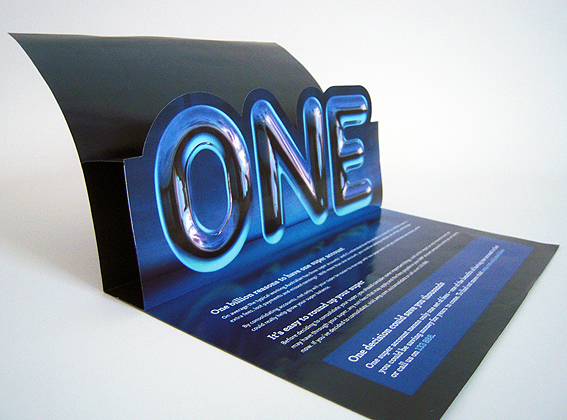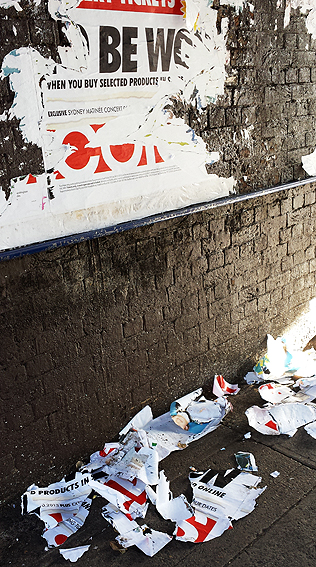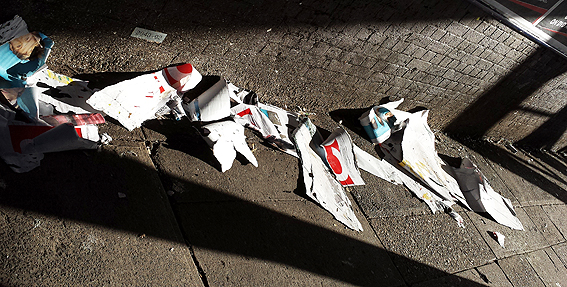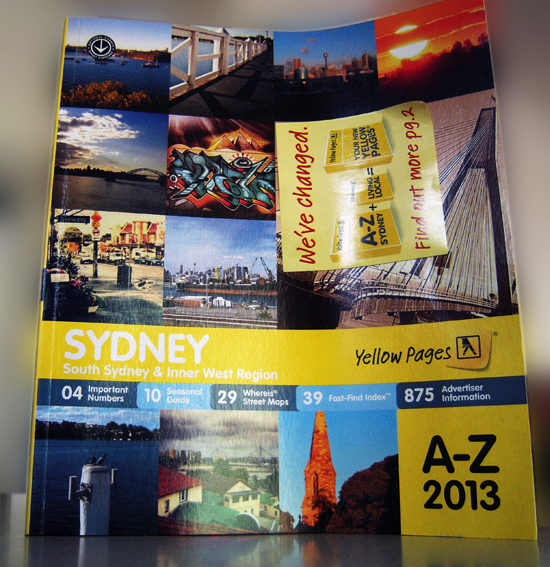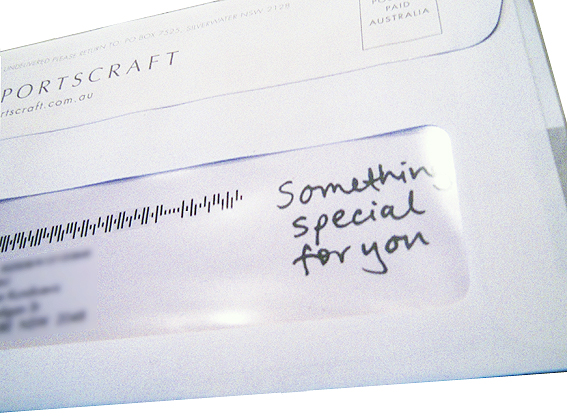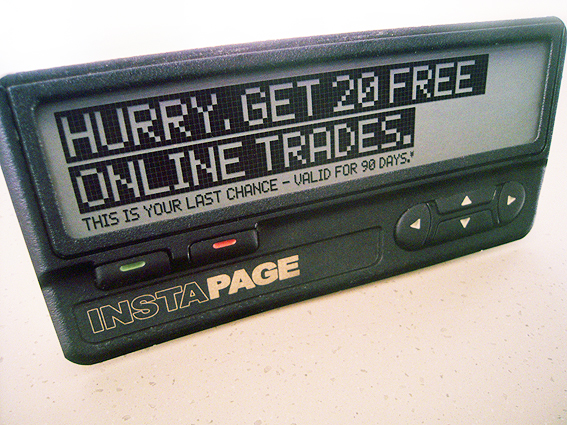This one (or ‘ONE’) falls into the ‘interesting but meaningless’ category (as opposed to the overflowing ‘boring and meaningless’ category). It’s basically an A4 sheet with a fold and then, when you open it up, hey presto, there’s a big pop-up ONE. Why?*
The pop-up ‘ONE’ is another sheet which has been die-cut, folded and glued inside the main sheet so that it stands up on opening. It’s a basic piece of paper engineering which is, nevertheless, nice to see in a piece of marketing collateral. There should be more of it. The art of paper engineering is a much-neglected aspect of the whole print communication nexus (you see, I speak the lingo). Long before digital technology discovered the thrill of Augmented Realities, paper people were accomplished at making 3D environments.
Typically, pop-ups are associated with children’s books and, no doubt, many of us have fond memories, either from our own books or those of our children, of the excitement of turning the page and seeing a whole panorama spring to life. It’s pure magic – so why not use a little of it for the more mundane, grown-up topics of banking and superannuation?
I can’t help feeling though that, in this case, it could have been used for something rather more exciting that a big ONE. OK, so that is the message and, in order to make sure that we get it, I understand the rationale behind making it big, blue, shiny and STANDING UP. Fair enough. Sometimes though it would be nice if the message could beguile, charm or seduce, rather than just CLUB me into acknowledging it. Just a thought.
I figure there will be many long days before I see another pop-up flyer, so it’s just a little dispiriting that this should be the ONE.
* Why ONE? Apparently, it refers to the estimated $1.1 billion lost each year through misplaced superannuation accounts, although heaven knows how they arrive at such a figure. And it’s not even ONE. It’s ONE POINT ONE. Don’t they care about the other missing $100 million? How casual. I’m not giving them my super if that’s how relaxed they are about money.

